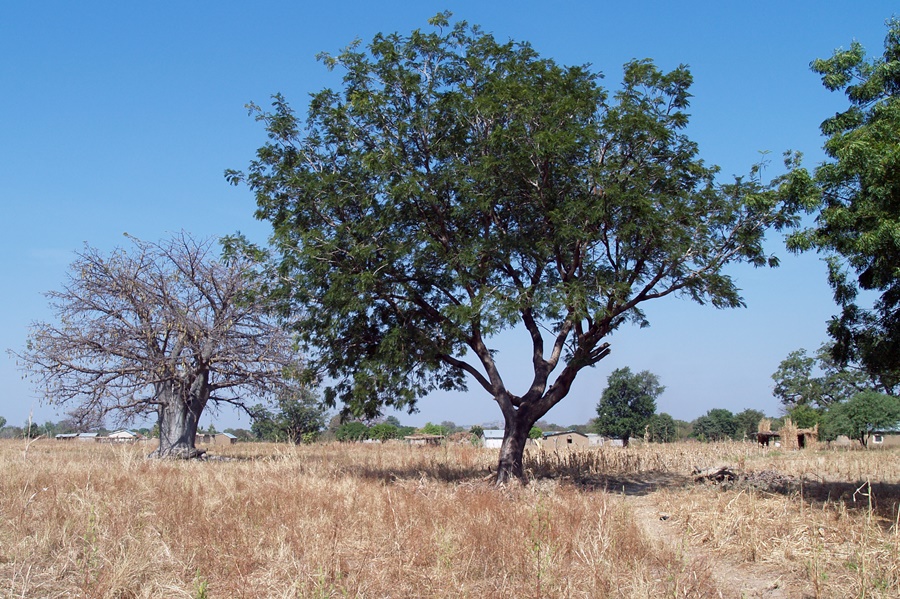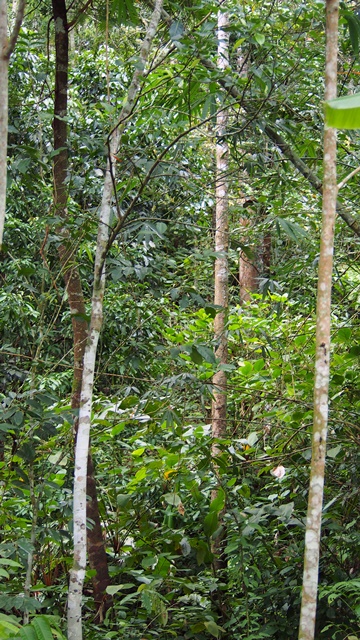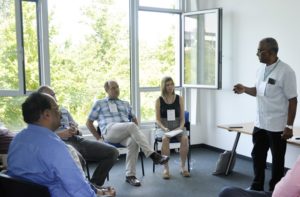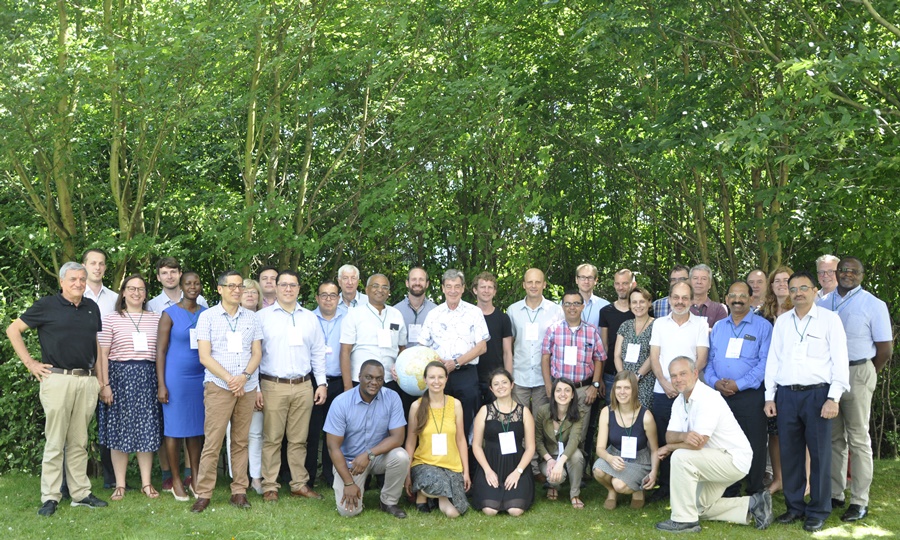
Biodiversity is inherently linked to well-being and its decline is everyone’s problem, says expert group. Addressing the problem isn’t free. Financing needs to be directed into biodiversity-friendly production to reach national and international biodiversity targets.
By Philip Dobie and Anja Gassner with contributions from Susan Onyango, Kai Mausch, Corbett Nash, Robert Finlayson and Charlotte Häusler Vargas
We will end the year 2019 without having completely achieved any of the Aichi Biodiversity Targets for 2020. International attention has already turned to the global biodiversity agenda for 2020 onwards. An important lesson from the previous decade is that conserving biodiversity costs money. Certainly, OECD donors have been very generous in funding biodiversity projects, and some countries have invested heavily in establishing new protected areas, but project funding is by its very nature short term. Long-term budgets for biodiversity conservation are inadequate around the world and new sources of funding are scarce. Biodiversity remains an economic externality — outside of the mainstream economy — and as such it attracts only small amounts of special funding.
If the biodiversity agenda after 2020 is to have any hope of success, much more effort will have to be put into mainstreaming biodiversity, bringing its costs and benefits into general spending. Financing mechanisms will be needed for investment in biodiversity in exactly the same way that mainstream finance drives the rest of the economy. Promising trends towards sustainable finance, impact investment and responsible consumption and production have to be strengthened to bring them out of niche activities and make a significant impact.
Urgency and failure
On 24–25 June 2019 in Bonn, Germany, Deutsche Gesellschaft für Internationale Zusammenarbeit GmbH (GIZ) and World Agroforestry (ICRAF) brought together financing experts from six projects funded by the German Federal Ministry for the Environment, Nature Conservation, and Nuclear Safety through its International Climate Initiative for a global learning and knowledge-exchange event. Public- and private-sector experts from Africa, Asia, Europe and Latin America shared their experience of directing investments into biodiversity-friendly food production.

These reports have drawn attention to the critical and increasing loss of biodiversity around the world and the urgency of changing agricultural production and patterns of food consumption to conserve biodiversity while feeding an expanding population. An agricultural transformation is needed to shift production to a model that embraces biodiversity-friendly approaches.
‘Current market, policy and intervention failures make a “biodiversity-friendly approach” to land use less economically profitable than today’s conventional agriculture’, said Anja Gassner of World Agroforestry, one of the authors of this story. ‘Investors are less interested in biodiversity-friendly agriculture because of its perceived greater risks, higher uncertainty and more vulnerability compared with highly intensive, monocultural land-use systems. Hence, agriculture and forestry are becoming simplified to a degree that only a few crops and tree species are grown and the dietary diversity of many communities is becoming very low’.
New financial mechanisms
The experts called for new financial incentives for a transformative model of agriculture that is friendly to biodiversity and provides nutrition throughout the year for agricultural communities and people who buy their products. Such a transformation will blend agriculture with conservation and contribute to the United Nations Decade on Ecosystem Restoration.
‘After the Aichi Targets, a new framework on biodiversity conservation is expected to guide on how we protect and sustainably use biodiversity’, said Andreas Gettkant of GIZ. ‘Public and private financing is required for this’.
‘Countries spend only 0.14–4.6% of public budgets on biodiversity’, noted Philip Dobie, research fellow at World Agroforestry and one of the authors of this story. ‘Financing needs to grow by 20–30 times to achieve the Aichi Targets. The massive challenge is to bring in other financing rather than relying on donor funding’.
At present, this understanding has not been mainstreamed. As the IPBES report points out, there has been significant progress regarding policies and strategies but implementation is lacking, calling for more political effort and work on the ground. Lack of adequate finance is a major set-back.
How to do it?
The experts argued that the private sector and, often, governments, will implement the necessary transformation of agriculture if investment leads to improved incomes, livelihoods and nutrition.

It is the role of the research community to demonstrate that investment into biodiversity supports governments to reach their ambitious development goals while de-risking supply chains for the private sector.
It is widely assumed by land users and decision makers that the most profitable use of forest land is to ultimately transform it into monocultures and commodity plantations, to the detriment of local food production and sustainable forest management. Usually, the relative success of conventional farming is the result of complex financial incentives and technical training that focuses on maximizing yields rather than optimizing the long-term, sustainable use of land and reducing the vulnerabilities of producers.
Unless international public funds are used to demonstrate the value of investing in biodiversity-friendly agriculture, the trend will continue to destroy biodiversity and manage land unsustainably, despite much effort to halt this. Restoration and biodiversity conservation need the input of public funding; political frameworks and incentives need to be adjusted in favour of biodiversity.
‘Biodiversity conservation and biodiversity-rich landscapes require two different streams of finance’, said Peter Minang, leader of the Greening Tree Crop Landscapes research unit at World Agroforestry. ‘We have to be innovative to bring private-sector money into sustainable land uses. We have to establish a business case to interest them’.
Finance experts at the workshop emphasized that there are sources of funding for biodiversity conservation, much in the form of commercial bank loans; and examples have been established around the world for schemes that ‘soften’ the terms of investment in biodiversity conservation, often as a result of government support in the form of guarantees.
There is tremendous scope for blending funds from public and private sources, they said, with public funding being used to create the conditions that de-risk investment for the private sector.
Designing schemes for already-willing investors
The real challenge is to design more and more diverse investment proposals, which are attractive and profitable for private investment and reflect unique national, and landscape, conditions. One of the major revelations from the workshop was that private money is available, meaning investors are looking for opportunities in ‘green’ projects. The obstacle is a disconnection between the different actors: 1) the governments that are tasked to provide services to smallholders, farmers’ cooperatives and businesses but which do not necessarily understand the need for, and benefits of, diversified, biodiversity-friendly production systems and diversified food value-chains; 2) the technical advisors who would like to drive change but are looking for public funds to be paid for their services; and 3) the financial experts who have the job of adapting investment schemes to the reality of producers in emerging economies and who need technical advice.

 Ajit Mathai of mByom facilitating a small-group discussion at the workshop. Photo: World Agroforestry/Susan Onyango
Ajit Mathai of mByom facilitating a small-group discussion at the workshop. Photo: World Agroforestry/Susan Onyango
The experts discussed existing finance products and blended-finance instruments that are intended to promote biodiversity-friendly production: 1) East African Development Bank’s Biodiversity Investment Fund, targeting agriculture, aquaculture and fisheries, forestry, renewable energy, tourism and wildlife; 2) Indian National Bank for Agriculture and Rural Development’s biodiversity blended finance; 3) private capital-funded, forest-landscape restoration ; 4) ForestFinest Impact Land Use Consulting’s work with investors on land use, carbon trading and corporate social responsibility; 5) United Nations Development Programme’s Biodiversity Finance Initiative in Peru, which has prioritized several mechanisms within government to support both public and private sectors; and 6) Uganda’s blending of traditional funding from the central government with donors with innovative financing mechanisms, including payment for ecosystem services, biodiversity offsets, trust funds and markets for certified products in the agriculture, tourism and mining sectors.
Some examples of innovations in biodiversity-friendly value chains include 1) mByom Consultancy’s digital solutions in Kerala, India that provide smallholding farmers with assistance in procurement, farm-gate supply and services, and a transparent e-payment system; 2) Forest Stewardship Council’s Ecosystem Services Procedure that can be used by businesses and governments to demonstrate the impact of their purchases, payments and investments on ecosystem services; 3) Biodiversity Action Plans for planning, implementing and monitoring biodiversity-friendly measures in and around farms; 4) WWF’s Sustainable Consumption and Production project that is establishing low-carbon production and consumption; and 5) Union for Ethical BioTrade’s standards that guide businesses on biodiversity-based production.
Take the lead in making biodiversity an economic asset
Most importantly, countries need to view biodiversity as an economic asset. They can use existing innovative models, such as payment for ecosystem services, green funds, public-private partnerships, royalties, biodiversity offsets, debt-for-nature swaps, collection of fees, tax breaks, carbon banks and many more to catalyse the involvement of the private sector in biodiversity financing. Some are already making progress but more needs to be done. More options need to be packaged and available, adapted to specific needs.
The expert group called for governments to take the lead on ensuring that biodiversity is protected and recognised as a true asset, through various mechanisms.
- National finance and policy working groups to lead integration of biodiversity goals and agricultural financing mechanisms
- Public investment into mixed, ‘mosaiced’ landscapes — for example, through enhanced support to agricultural extension and rural advisory services, upgrading value chains, improving seed and seedling systems for indigenous trees and underused crops — to de-risk farm and forest-community enterprises
- Engagement with the private sector to develop principles and standards for inclusive and biodiversity-friendly value chains to help companies commit and diversify
- Research studies to quantify the effect of investment on biodiversity, restoration of ecosystem services and nutritious food.
Background
The workshop was jointly organized by several projects of the International Climate Initiative. The experts and project leaders gratefully acknowledge the leadership and support of the German Federal Ministry for the Environment, Nature Conservation, and Nuclear Safety.
- Harnessing the Potential of Trees on Farms for Meeting National and Global Biodiversity Targets (implemented by World Agroforestry)
- Private Business Action for Biodiversity (implemented by GIZ)
- Biodiversity and Ecosystem Services in Agrarian Landscapes (implemented by GIZ)
- Mainstreaming Biodiversity into the Mexican Agricultural Sector (implemented by GIZ)
- International Forest-Related Climate Finance (implemented by GIZ)
- Mainstreaming EbA: Strengthening Ecosystem-based Adaptation in Decision-making Processes (implemented by GIZ)


